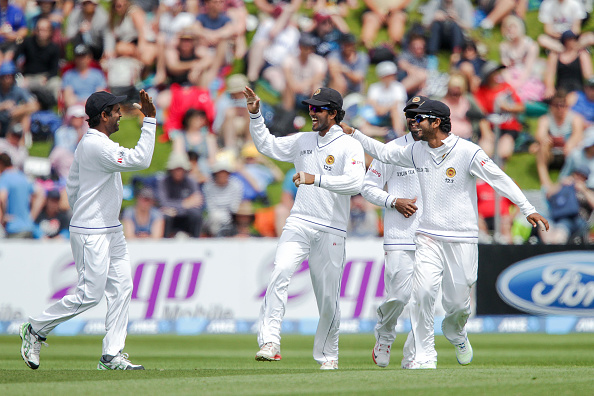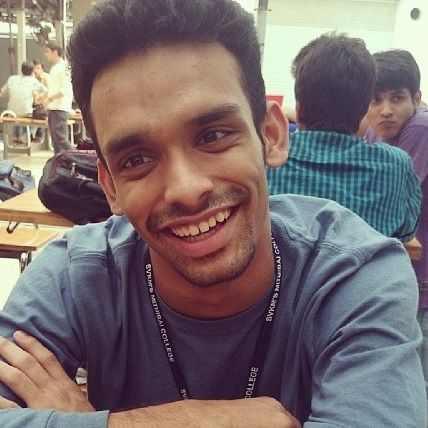Sri Lanka Vs. India | Talking points from Day 3 of the first Test

Getty
After concluding Sri Lanka’s innings for 291 for 9 in their first innings of the Galle Test, India didn’t enforce follow-on the hosts and at the end of the day’s play, managed to score 189/3. Currently, India have an aggregate lead of 498 runs with skipper Virat Kohli batting on 74.
Brief scores: India 600 and 189/3 (Virat Kohli 74* Abhinav Mukund 81; Danuska Gunathilaka 1/15, Dilruwan Perera 1-42) lead Sri Lanka 291 (Dilruwan Perera 92*, Angelo Mathews 83; Ravindra Jadeja 3-67) by 498 runs.
Sri Lanka come out swinging in the morning session
After losing half their side for as little as 154 by the end of the second day, Angelo Mathews and Dilruwan Perera tried to go after the Indian bowling in the first session of day three. The duo managed to stitch a 62-run partnership for the sixth wicket which was characterized by aggressive stroke play as they looked to get Sri Lanka as close as possible to India’s first innings total. India started the day with Umesh Yadav and Ravindra Jadeja and then brought R Ashwin and Mohammed Shami to attack, but to avail as the Lankan duo showed application and aggression in equal measure to pile as many runs as possible. While such an aggressive approach in Test cricket can be said to be questionable, both Mathews and Perera can’t really be blamed given that there were not many batsmen remaining in the Lankan side. However, Mathews’ aggression eventually proved to be his downfall as he held out to Abhinav Mukund for 83 in the 59th over of the Sri Lankan innings.
Dilruwan Perera sets an example for his side
While most were expecting the Sri Lankan innings to fold soon after Mathews’ departure, Perera had other ideas as he held one end up but still managed to score at a brisk pace. Unfortunately for the home side, none of the remaining players could give him the support he needed as Rangana Herath (9), Nuwan Pradeep (10), and Lahiru Kumara (2) all fell cheaply. While the lower order couldn’t be blamed for that, it can be said that Perera set a perfect example for his side on how to tackle the Indian bowling. Perera simply treated the Indian bowling on merit as he dispatched the poor deliveries to the boundary while giving the good ones the respect that they deserved. However, as luck would have it Perera was left high and dry on 92 as the Sri Lankan innings ended at 291 for 9 owing to Asela Gunaratne’s absence due to the injury that he sustained during the opening day of the Test.
Why Kohli’s decision of not to enforce follow on is justified
Given that India had managed to take a commanding 309 run lead in the first innings, they had the option of enforcing the follow-on on the home side, but Virat Kohli decided against it. Though Kohli’s decision may come as a surprise to some, on second thoughts it’s easy to see the reasons behind Kohli’s decision. Batting in the final innings of a Test match in Galle has never been an easy task, especially for India. The last time India played Sri Lanka in a Test at Galle in 2015, India were chasing 175 for the win but were bundled out for 112, owing to a seven-wicket haul for Rangana Herath and Tharindu Kaushal who chipped in with three wickets. This was also Kohli’s first full series as Indian captain and understandably left a bad taste in his mouth and therefore it’s no surprise that the 28-year-old didn’t want a repeat of the same scenario. Another logic that might have persuaded Kohli to bat again, was the fact that the spinners were tired and he might have wanted to give them some rest before taking the field again. Further, given that India
